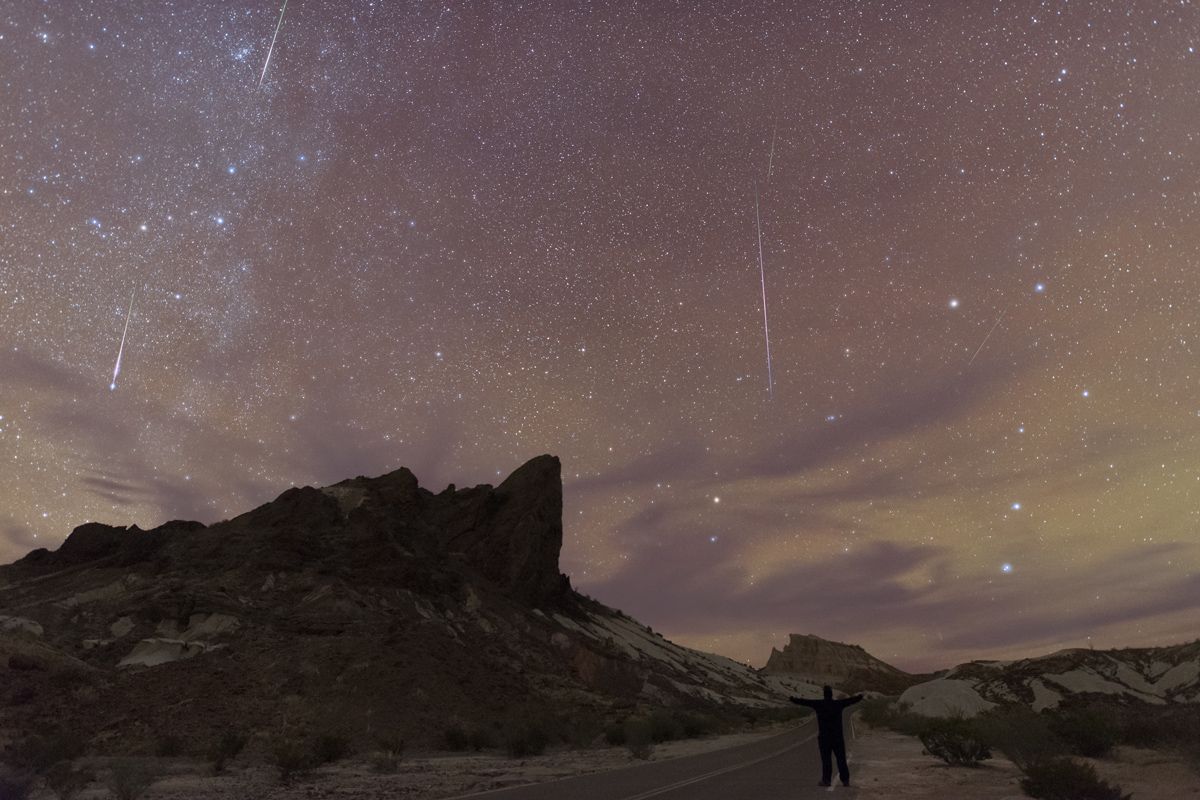
It's an excellent year to view the Orionids, which peak before dawn on Wednesday (Oct. 21).
"Not a bad show, considering we're looking at a cosmic litterbug," I said to the coterie of comet gazers.
"Really, what we're looking at is a piece of garbage out in space; think of that beautiful tail as 'cosmic litter'; little pieces of dust and grit left behind by NEOWISE, all cluttering up the solar system." .
If you step outside before dawn during the next week or so, you might try to catch a view of cosmic litter that has been left behind in space by an even more famous comet: Halley's.
We call that cosmic litter the Orionid meteor shower.
Related: How to see the best meteor showers of 2020 .
If the December Geminids and August Perseids can be considered ranking as the "first string" among the annual meteor showers in terms of brightness and reliability, then the Orionids are on the junior varsity.
The name "Orionid" comes from the fact that the radiant — that spot on the sky from where the meteors appear to fan out from — is just above Orion's second brightest star, ruddy Betelgeuse. .
Step outside before sunrise on any of these mornings and if you catch sight of a meteor, there's about a 75% chance that it likely is a byproduct of Halley's Comet.
The higher in the sky Orion is, the more meteors appear all over the sky.
The Orionids are one of just a handful of known meteor showers that can be observed equally well from both the Northern and Southern Hemispheres. .
All comets eventually disintegrate into meteor swarms and Halley's is well into that process at this time. .
In the case of Halley's Comet, its dirty trail of debris has been distributed more or less uniformly all along its entire orbit.
And Halley's Comet has left a legacy that is visible to us in the form of not just one, but two annual meteor showers.
But for folks like myself — who will probably not be around when it returns — the Orionids will give us a chance to at least catch a view of some of the cosmic debris Halley has left behind in its wake